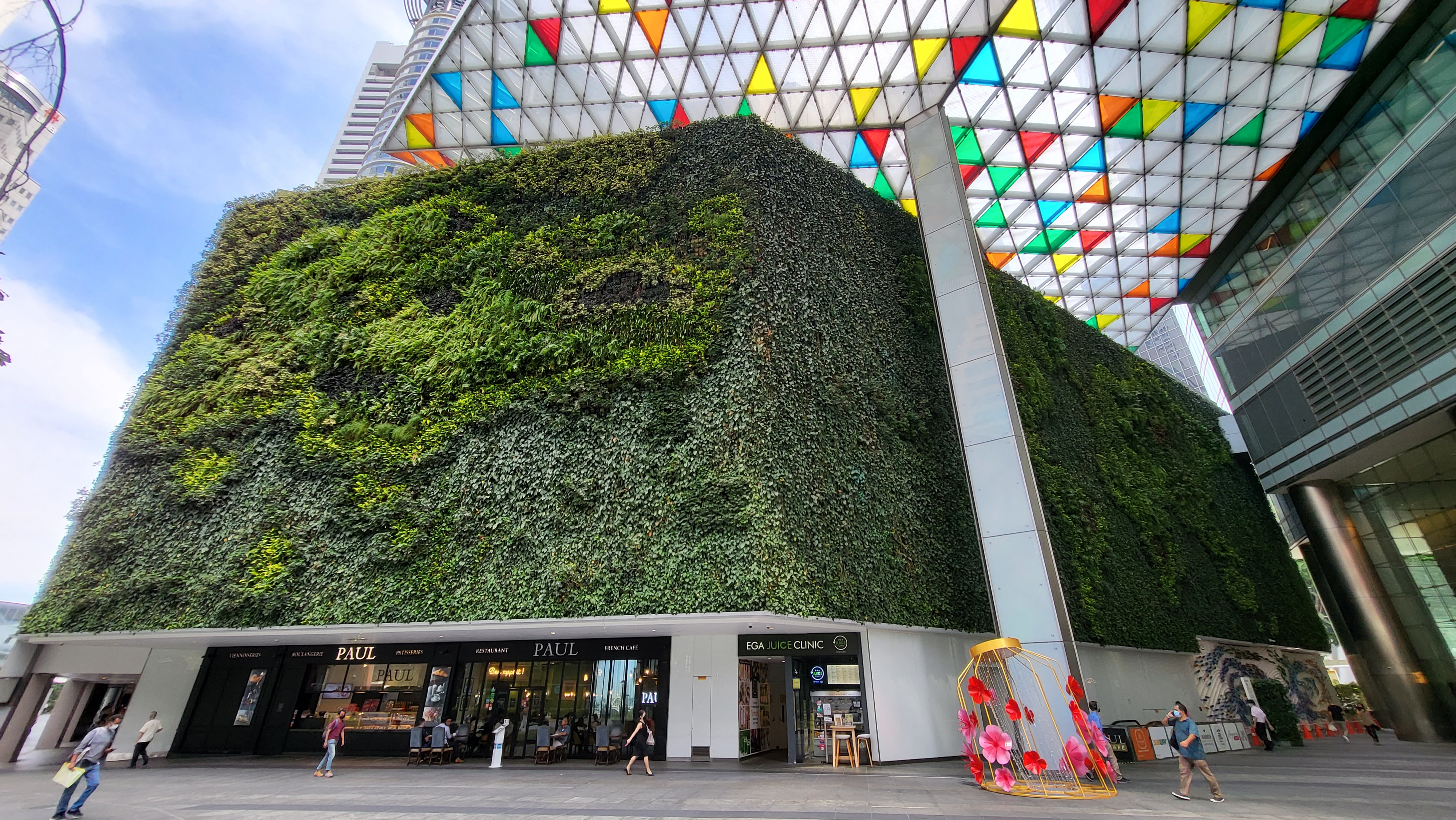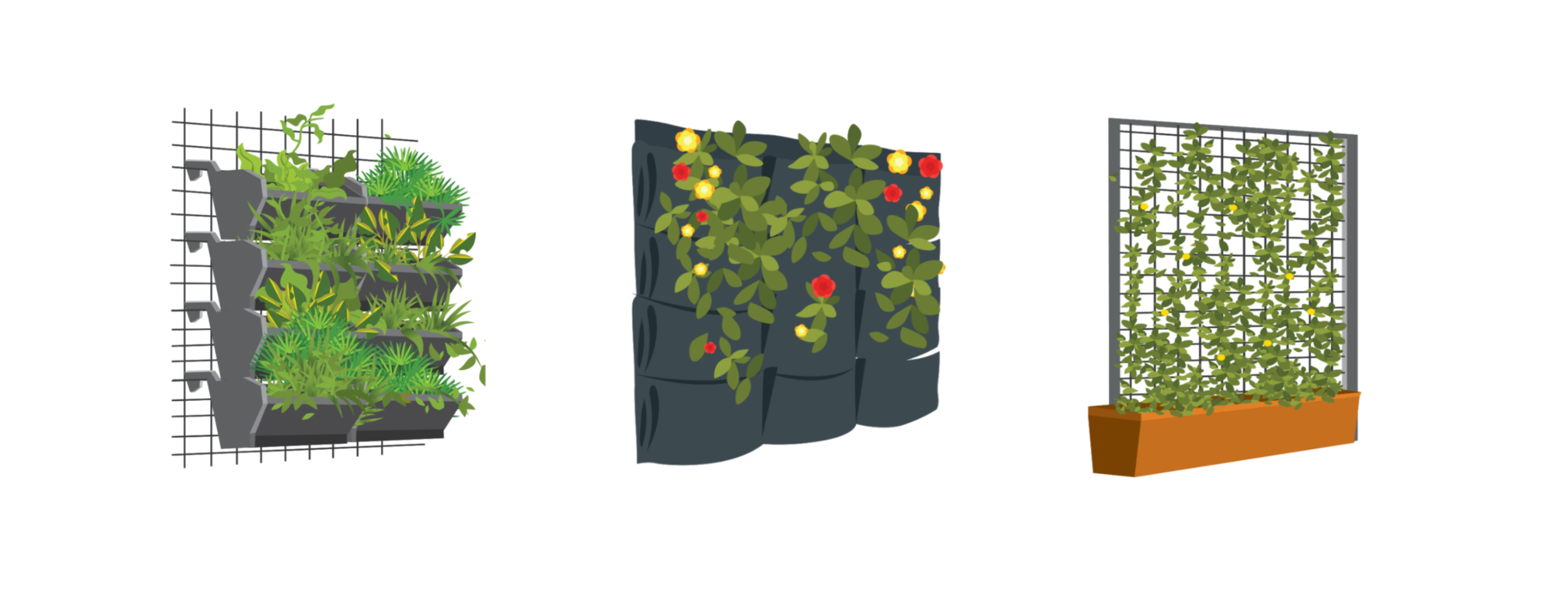Vertical Greenery

Vertical greenery represents an innovative dimension in greenery-related infrastructure, where plants are incorporated within vertical surfaces. Traditionally, vertical greenery involved climbing plants with self-clinging roots growing directly on the building surfaces, twining plants growing on trellis and pergolas, or plants growing within the crevices of stacked rocks. In recent years, numerous contemporary systems have been developed to grow a variety of plants on vertical surfaces.
Different Categories of Vertical Greenery Systems
Vertical greenery systems fall into three broad categories:
- Planter systems
- Pocket systems
- Support systems
Other hybrid forms of vertical greenery system also exist in the market.

Planter Systems
Planter systems consist of individual pots mounted at regular intervals onto a structure or frame. Draping or trailing plant species are ideal for this type of system, as they create the appearance of a continuous wall of greenery.
Pocket Systems
A pocket system consists of panels fabricated from at least two layers of moisture retention mats. These mats are attached to a rigid backing for support and pockets are created out of the outer layer for plant placement.
Support Systems
A support system consists of planters mounted at regular intervals (typically 3 m apart) onto welded wire trellises. The trellises are ideal for accommodating climbing plants to spread over the structure and thus creating a ‘green screen’.
Components of a Vertical Greenery System
There are 3 basic components:
- Plants
- System and media
- Irrigation
There have been many different systems developed, with each experimenting with different ways of containing the media for vertical planting. However beyond the efficiency, weight, and suitability of the system and media, the key criteria for a successful vertical greenery system are the planting and irrigation factors.
It is also pertinent to take note of the drainage outlet for vertical greenery installations to avoid unsightly puddles forming at the base of the wall. Simple drainage trays at the base of the installation or even locating the green wall strategically at a natural drainage outlet are some possible solutions.
Plant Selection
Plant selection is crucial to the success of vertical greenery. The types of plants selected depend on system type, design intention, environmental factors, budget, and expected degree of maintenance. There are numerous plant species that can be grown vertically.
Due to the thin profile of the system and gravity, the substrate media dries up rapidly and contributes to the high rate of evaporation. As such, drought-tolerant plants are a better choice for vertical greenery systems despite having a complete irrigation system in place. However, it is not an absolute criterion. With a suitable and timely irrigation regime, appropriate planting media, and proper system design, it is still possible to grow a wide variety of plants.
Head to our plant resources page for recommendations of plants for green walls.
Need some funding your new rooftop greenery or vertical greenery? Find out more about the Skyrise Greenery Incentive Scheme here.

